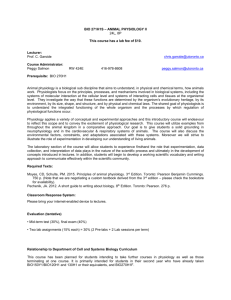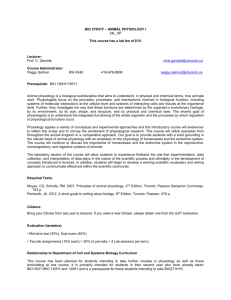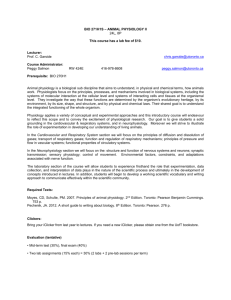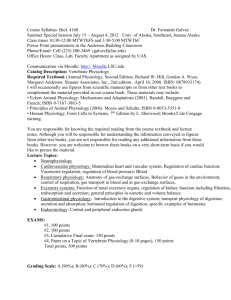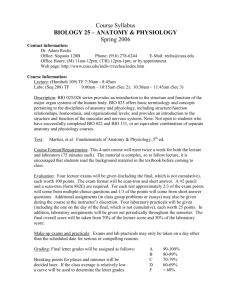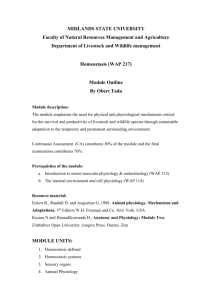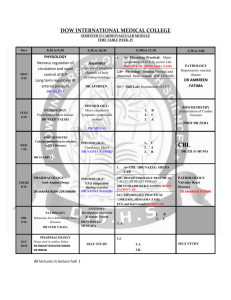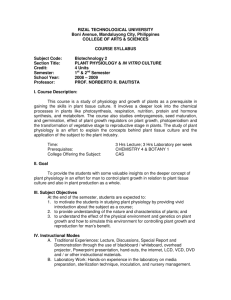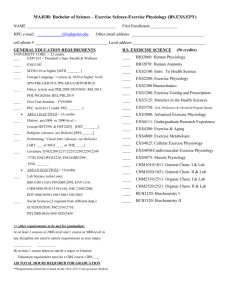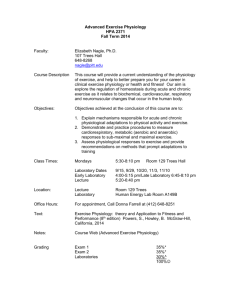BIO 252Y1Y – ANIMAL PHYSIOLOGY: CELLS TO SYSTEMS
advertisement
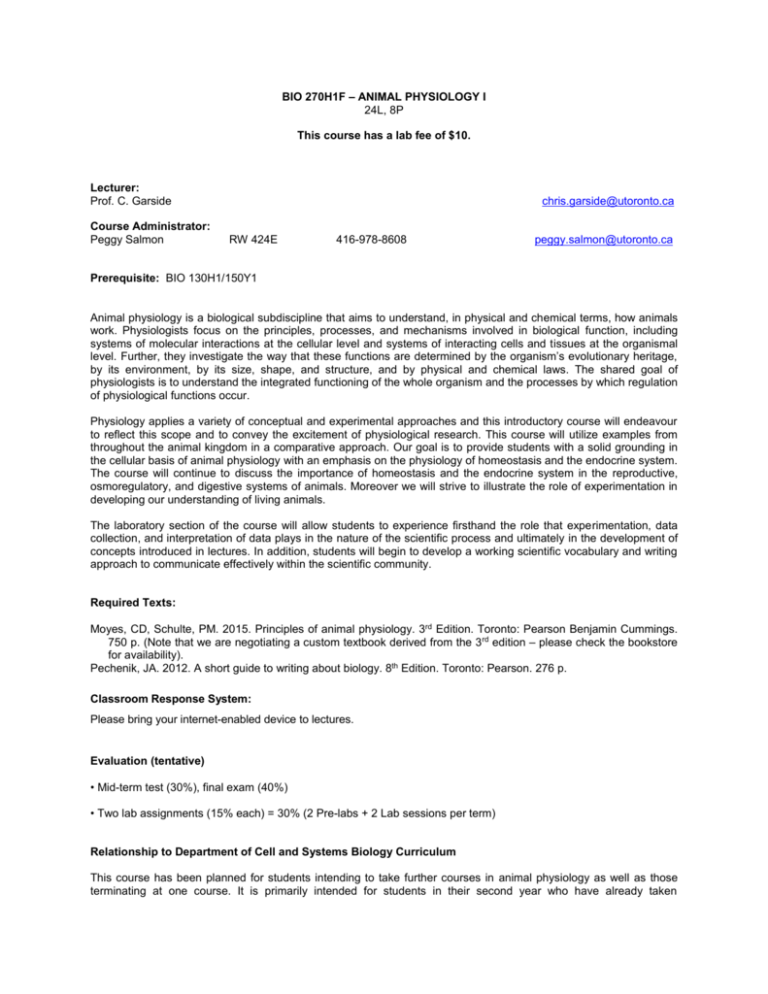
BIO 270H1F – ANIMAL PHYSIOLOGY I 24L, 8P This course has a lab fee of $10. Lecturer: Prof. C. Garside Course Administrator: Peggy Salmon chris.garside@utoronto.ca RW 424E 416-978-8608 peggy.salmon@utoronto.ca Prerequisite: BIO 130H1/150Y1 Animal physiology is a biological subdiscipline that aims to understand, in physical and chemical terms, how animals work. Physiologists focus on the principles, processes, and mechanisms involved in biological function, including systems of molecular interactions at the cellular level and systems of interacting cells and tissues at the organismal level. Further, they investigate the way that these functions are determined by the organism’s evolutionary heritage, by its environment, by its size, shape, and structure, and by physical and chemical laws. The shared goal of physiologists is to understand the integrated functioning of the whole organism and the processes by which regulation of physiological functions occur. Physiology applies a variety of conceptual and experimental approaches and this introductory course will endeavour to reflect this scope and to convey the excitement of physiological research. This course will utilize examples from throughout the animal kingdom in a comparative approach. Our goal is to provide students with a solid grounding in the cellular basis of animal physiology with an emphasis on the physiology of homeostasis and the endocrine system. The course will continue to discuss the importance of homeostasis and the endocrine system in the reproductive, osmoregulatory, and digestive systems of animals. Moreover we will strive to illustrate the role of experimentation in developing our understanding of living animals. The laboratory section of the course will allow students to experience firsthand the role that experimentation, data collection, and interpretation of data plays in the nature of the scientific process and ultimately in the development of concepts introduced in lectures. In addition, students will begin to develop a working scientific vocabulary and writing approach to communicate effectively within the scientific community. Required Texts: Moyes, CD, Schulte, PM. 2015. Principles of animal physiology. 3rd Edition. Toronto: Pearson Benjamin Cummings. 750 p. (Note that we are negotiating a custom textbook derived from the 3 rd edition – please check the bookstore for availability). Pechenik, JA. 2012. A short guide to writing about biology. 8th Edition. Toronto: Pearson. 276 p. Classroom Response System: Please bring your internet-enabled device to lectures. Evaluation (tentative) • Mid-term test (30%), final exam (40%) • Two lab assignments (15% each) = 30% (2 Pre-labs + 2 Lab sessions per term) Relationship to Department of Cell and Systems Biology Curriculum This course has been planned for students intending to take further courses in animal physiology as well as those terminating at one course. It is primarily intended for students in their second year who have already taken BIO150Y1/BIO120H1 and 130H1 and is a prerequisite for those students intending to take BIO271H1S. BIO 270H1F is an ideal introduction to aspects of animal physiology and related fields of experimental biology. It is an excellent preparation for upper level animal physiology and related courses such as CSB 325H1, 332H1, 343H1, 345H1, 346H1, 426H1, 432H1, 445H1 and 447H1. **Student Schedule Planning Tips**: Please note that if you have a course conflict with a BIO270H lab, you need to keep trying to resolve these using ROSI until the evening of Thursday September 13th, 2015. The course office cannot help students with conflicts before ROSI closes for lab enrolment on September 13th. The best way to get a lab that fits your schedule is to check ROSI frequently through the summer—spots may open up at any time. If you still cannot get a lab that fits your schedule, beginning September 14th – 18th, you may come to the BIO270H office and we will do our best to assist you. If you do require assistance with obtaining a lab, please make sure that when you visit the course office that you have alternatives to avoid disappointment.
